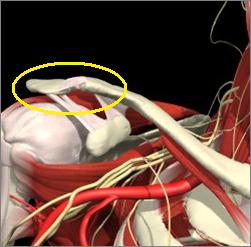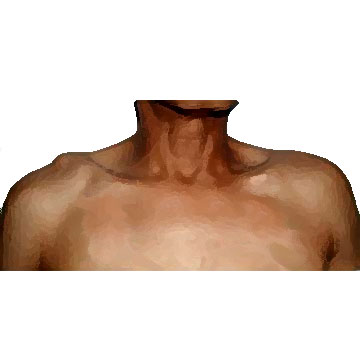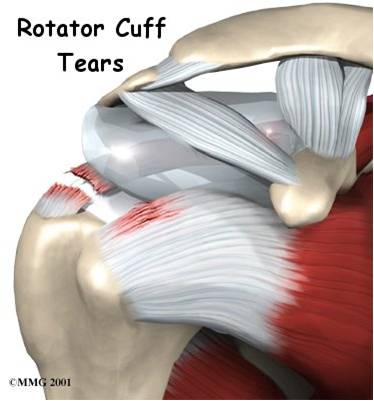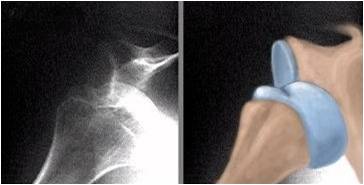How to Squat Big with Shoulder Pain
Let’s say you want to hit the gym and train some wheels of steel today, because leg day is everyone’s favorite part of the training experience, right?? RIGHT?? Riiiiight. Here’s the problem-o, though: you got a busted up wing and you can’t do your most favoritest exercise of all (squats) without crippling male-pregnancy-with-the-baby-coming-outta-the-wrong-place kinda pain. How are you gonna get your swole on without being able to do some earth-shatteringly heavy squats that cause every guy in there to fear you and every girl in there want to be with you? Well chief, I’m about to tell you.
Step One: Know Thyself
There’s a whole bunch of ways a shoulder can get FUBAR’ed, and each one is going to have a difference cause, aggravating position, and squat type that it will respond best to and worst to. Understanding the biomechanics of your pain will become the best part of how you approach your leg training, as it will help you to heal without causing you to become a sniveling wuss on the smith machine with one hand holding on to the thing.
AC Joint Separations
AC joint separations are by far the most common shoulder injury for the lifting population as well as contact sports. It’s commonly caused by direct trauma to the outside of the shoulder, like getting checked into the boards on your side in hockey, and results in the joint essentially dislocating. Most of the time, people won’t even realize they’re injured with this one, and just keep on playing, even though their shoulder is aching.
Most of the time, the joint will displace and result in the clavicle (collarbone) moving above the acromion process, looking like a big bump on top of the shoulder, and causing everyone around to say “DAMN!! What the hell’s wrong with your shoulder!!?!”
This will commonly compromise mobility of the shoulder into external rotation and abduction, or in other words, the direction needed to grab the bar when performing back squats. Sucks to be you, now, doesn’t it?? Additionally, performing front squats becomes a pain in the ass, as the bar is supposed to rest right on the acromion processes of each shoulder, and this can produce some pretty unpleasant feelings if the AC joint is an unhappy camper.
Rotator cuff strains or tears are the other most common shoulder injury seen in the gym, and typically result not from a high force application like many would think, but through improper biomechanics of the scapulothoracic joint that causes excessive wear and tear on the supraspinatus tendon, as well as an unbalanced force production from the muscles of the rotator cuff.
As a result, any movement that would cause the arm to externally rotate, abduct, or elevate (as in the holding position for a back squat), would cause some abrasion on that little guy and make him send some numbness and tingling down your arms, plus make it so you can’t shampoo your hair that evening because lifting your arm is damn-near impossible. However, the bar can be held in a front squat position, unlike in the AC joint separation, but as the rotator cuff is weak, the bar has to be placed precisely in order to limit the involvement of the cuff and prevent further damage.
Last but not least today, is the dislocation.
Commonly caused when the humerus moves anterior, inferior and is externally rotated in the capsule, and can really strain the hell out of the nerves and blood vessels that run down the front of the arm.
Again, the back squat is the enemy here, but there are a lot more degrees of freedom to work with than any of the other injuries.
Step Two: Know Thine Enemy
So how do you differentiate from an ache to an owie to an Ohmygodit’spoppedout putitbackputitbackputitback!!!!? That’s something a qualified medical professional should be able to help you with. If you have shoulder pain, get it checked out, diagnosed, and find out what you can do with it and what you shouldn’t do with it (Re: overhead pressing of any kind, ever).
Step Three: ATTACK!!!
Essentially, the worst squat technique you could use with any shoulder exercise is the barbell back squat. It puts way too much strain on the shoulder and associated complexes that it winds up causing more harm than good. This section will break it down for you, injury by injury, which squat patterns will be best and which ones to avoid like an Olsen twin avoiding a buffet.
AC Joint injuries tend to respond best to squats that don’t allow direct loading to the AC joint, or require the arms to be externally rotated, abducted and elevated, such as the front squat and the back squat. Therefore the safest position for these injuries is in a state where the shoulder is lightly flexed or not at all, held in neutral rotation and adducted towards the midline. The safest and most applicable types of squats for these injuries include the dumbell front squat, safety bar squat, 2-dumbell shoulder squat (or kettlebell squat) and hack squat.
Now before you rip on me for recommending a machine and saying “But Dean!! It’s not an actual squat if you’re all strapped into a machine with a fixed plane of motion!!!” I agree. However, there are situations where machine work is warranted, and overcoming or training around an injury is one of them. I like the hack squat because it still allows for triple extension of the ankles, knees and hips, provides an axial loading mechanism, and safely allows for resistance application to the shoulders and spine in a linear manner that doesn’t allow for any shear force directives. Sound good? Thought so.
Rotator cuff injuries work best when the arm isn’t moved away from the body in any direction, so back squats are definitely out of the question. However, unlike AC joint injuries, they can tolerate having the front squat directly load weight onto the anterior shoulder. The best squat variations for rotator cuff injuries include the dumbell front squat, kettlebell front squat, safety bar squat, barbell front squat, and of course hack squat.
With respect to the front squat, the grip used on the bar will either increase or decrease the pressure exerted on the shoulder joint. The most common ones are the clean catch grip (shown above), the crossover grip, which looks like a guy choking himself, and my personal favorite, the front post grip, which I unfortunately don’t have a picture of…… sorry.
The dislocation is a pretty finnicky one to deal with. The arm can’t externally rotate to hold the bar in a back squat, and any weight load that causes the humerus to have to resist inferior and anterior translation may be trouble, since it’s already weak in that direction. That would be like pushing your sheep towards a cliff and being surprised when the fluffy little buggers go over the edge.
So here we need to have a way to load the squat but not have the arm take any of the load itself. The options are a front squat, safety bar squat, or hack squat in order to achieve this.
No one likes to be injured, or feel like they have to change their entire world in order to accommodate one little naggingly annoying joint. By training smart, you can train around pretty much any injury, and still get quality development even during rehab. It could be an opportunity to get stronger elsewhere that you would normally not spend the time training, such as legs, back, or showgirl kick lines.
You don’t do kick lines?? Oh. Well……this is awkward.
A fantastic reference for anyone who deals with shoulder injuries is a new product from Rick Kaselj called The Effective Rotator Cuff Exercise Program.
Rick and I have worked together on Muscle Imbalances Revealed, and he’s quickly gaining a name for himself as the leader in post-rehab fitness training world-wide, so it’s a pretty safe bet that he will blow your freakin minds with this product. It comes complete with the resource for trainers to learn how to effectively program for rotator cuff injuries, an outline of over 80 rotator cuff exercises, and everything you could ask for to either fix your own shoulder issues, or to help your clients with theirs. Do yourself a favor and pick this up today by clicking HERE.








10 Responses to How to Squat Big with Shoulder Pain